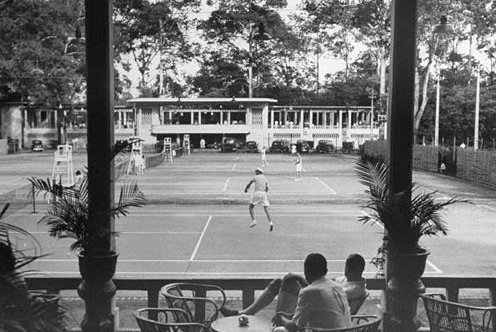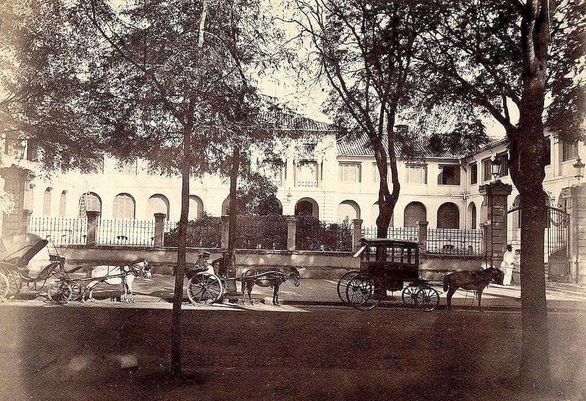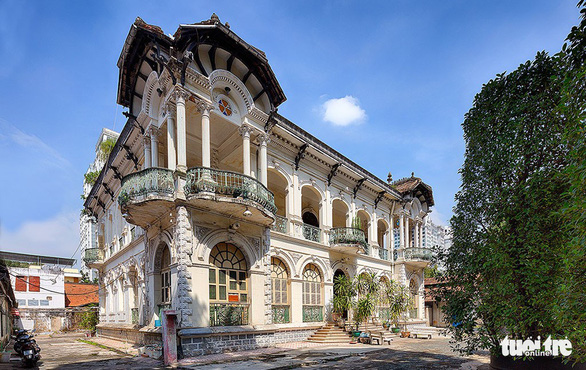Authorities in Ho Chi Minh City sought expert advice on preserving decades-old buildings of architectural and historical importance against an urbanization backdrop by holding a workshop attended by domestic and foreign experts on Tuesday.
The workshop aimed to collect views and experience concerning architectural planning and utilize them as a reference point in rehabilitating valuable structures of a city where the French once left their construction footprints.
The event was jointly organized by the architectural research center – a unit of the municipal Department of Planning and Architecture – and Minerva Joint Stock Company.
The department presented multiple tasks in selecting structures eligible for architectural cityscape preservation, which came into two types: villas and non-villas.
The chosen structures may be located at separate sites or exist in clusters, the agency said, stressing ancient villas figured high on the list of significant cityscape spaces for preservation.
The architectural research center said it had worked with French experts in 2014 and 2015 to produce tailored scientific criteria for determining the value of decades-old buildings built before 1975 in the metropolis.
It concluded that the largest number of old villas, 808, was found in the city's District 3.
The entire city now has 1,277 old villas chiefly in District 1, District 3, District 5, District 10, Binh Thanh District, and Thu Duc District.
 |
| People play tennis at Ong Thuong Garden, which is now the Tao Dan Park in District 1, Ho Chi Minh City, in this file photo. |
Phuc Tien, a workshop attendee and the author of research books on Saigon (the old name of Ho Chi Minh City still in use now), gave the label 'special area of old Saigon's legacy' to sites such as Ong Thuong (‘Officials’) Garden, Dui Market and old-time villas in District 3.
Ong Thuong Garden is the present Tao Dan (‘Ground of Refined Manners’) Park in downtown, built by the French in the late 19th century, while Dui Market, formed in the early years of the century, was an area of derelict buildings at the corner of Vo Van Tan and Cach Mang Thang Tam Streets in District 3.
Along one of the special area's streets lie multiple villas which were erected prior to 1955, area of architectural landscape significance and associated with historical figures and events, Phuc Tien said.
 |
| Horse-drawn carriages are seen in front of Thuong Tho Palace, built in the 1860s in Saigon during the French colonial rule, in this file photo. |
Preserving villa at 110-112 Vo Van Tan Street
A report that captivated the workshop's members was presented by French architect Nicolas Viste on restoring the ancient villa at 110-112 Vo Van Tan Street.
Viste, whose study interests are in culture and preservation projects, has headed the research group for the building since 2016, four years after he came to Vietnam to collaborate with UNESCO on putting into their original condition a cluster of Hindu temples extant at My Son in the central province of Quang Nam.
His studies of the residence are expected to lay the groundwork for developing the structure's distinctive qualities when its restoration plan has been carried out.
The building, supposedly put up in 1920s, is special in that it looks deceptively like a true French-style villa but actually incorporates a large number of Vietnamese architectural features in its appearance, he said.
Viste considers it a symbol of Vietnam's construction industry and a creation of the Southeast Asian country.
The villa's architectural style follows no single motif, showing all the hallmarks of France’s Art Deco and Europe-born Art Nouveau while fusing Western into Eastern design elements, he underlined.
“The building's style is an intriguing example of Saigon’s architecture. It is influenced by modern European techniques but carries the spirit, design significance and decorations of Vietnam,” he said.
A similar view was echoed by another speaker, architect Tran Van Khai, who said the villa blended Vietnamese qualities with European neo-classical architectural styles that the country had adopted and adapted to local tastes.
After nearly three years of studies and evaluation, a plan on the villa's restoration to its former glory was already formulated, according to news at the workshop.
Economic benefits from heritage
Khai emphasized the importance of heritage preservation for its roles in culture and the economy, in line with the view that heritage should be deployed for its own preservation's sake in the current urban development.
“Cultural heritage is the relics and pride of the evolution of a community,” the architect said.
“Promoting heritage is to fulfill goals in culture, politics and education, but this ultimately leads to economic benefits.”
Cultural heritage is the community's tangible fruit that helps shape urban structure as well its distinctive features, Khai said.
Having many remarkable architectural heritage buildings makes an enormous difference to the attractiveness of a city’s economic and political activities and directly yields various gains, he said.
“A common misconception is that one can have greater financial and esthetic benefits just by demolishing heritage buildings to erect modern-style, bigger ones,” Khai said.
“That's a wrong way to use heritage buildings.”
Architect To Kien, also a workshop participant, mentioned Japan's experience in its treatment of heritage as a basis on which he likened tourism-based preservation of heritage to the 'Thach Sanh rice pot' – a container held by legendary Vietnamese hero Thach Sanh that can eternally produce rice.
Kien said conflicts of interest between commercialization, modernization, integration into the rest of the world, tourism, and cultural heritage preservation all revolve around “traditional values and local identity.”
Therefore, he argued, the successful preservation of local identity, which includes cultural heritage, will generate sustainable growth in the tourist industry.
That would be just like creating a 'Thach Sanh rice pot' to guarantee long-lasting stable sources of income.
“Countries founded long ago that have a large quantity of heritage such as Italy, Spain, China and Japan all have ‘Thach Sanh rice pot’ coming from tourism,” Kien said.
To leverage heritage for tourism, Vietnam or Ho Chi Minh City needs excellent policies enforced in lockstep with raising the local community's awareness.
Lessons can be learned from Japan, which effectively uses heritage for tourism while applying stringent laws, including the law for the protection of cultural properties.
Like us on Facebook or follow us on Twitter to get the latest news about Vietnam!





















































